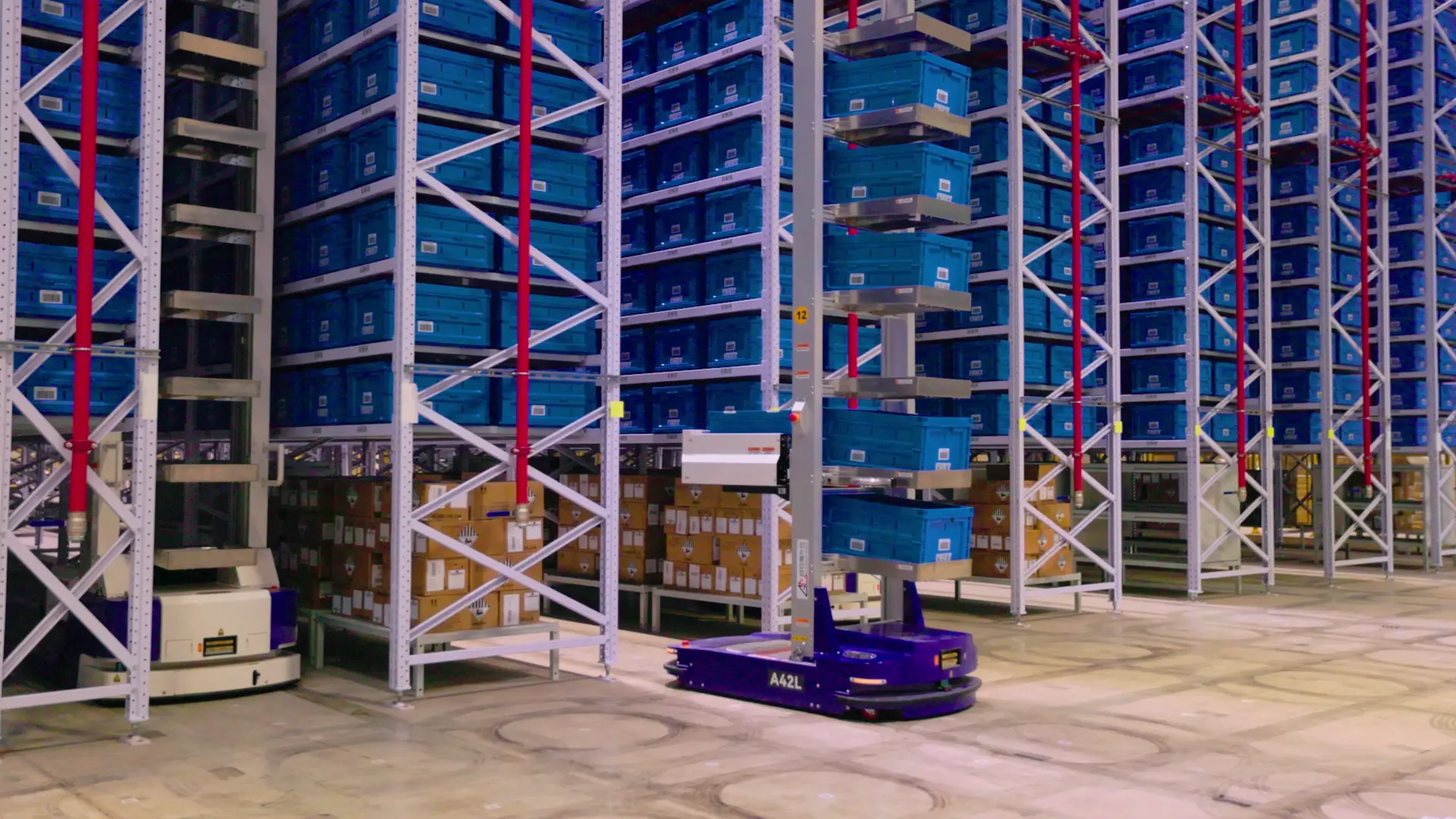Effective warehouse management is key to ensuring smooth operations in any e-commerce or fulfillment business. Whether you’re running a small operation or managing multiple facilities, optimizing how your warehouse functions can reduce costs, improve customer satisfaction, and increase operational efficiency. Here are the top tips for streamlining warehouse management and boosting efficiency.
Optimize Workflow Through Process Standardization
One of the most overlooked aspects of warehouse efficiency is process standardization. By creating standard operating procedures (SOPs) for tasks like receiving inventory, order picking, and shipping, you can ensure that everyone follows a consistent, repeatable process. Standardization reduces errors, saves time, and makes it easier to onboard new employees quickly.
Best Practice:
- Document SOPs and make them accessible to all employees.
- Regularly audit these procedures based on employee feedback to identify bottlenecks, make improvements and foster an environment of collaboration.
Leverage Warehouse Management Systems (WMS)
A Warehouse Management System (WMS) is one of the most valuable tools for streamlining operations. A WMS provides real-time data on inventory, helps manage order fulfillment, and optimizes storage locations. It can integrate with your e-commerce platform to sync orders and track inventory across multiple locations, reducing the chances of overstocking or stockouts.
Best Practice:
- Use your WMS to prioritize inventory by demand, enabling faster picking for frequently sold items.
- Invest in a cloud-based WMS to enable real-time access and updates from anywhere.
Implement Efficient Inventory Management Techniques
Effective inventory management reduces carrying costs, increases order accuracy, and improves customer satisfaction. Inventory should be organized in a way that supports quick and accurate picking. Adopting techniques like FIFO (First In, First Out) or LIFO (Last In, First Out) can help keep your inventory fresh and minimize waste. You can also consider implementing Just-in-Time (JIT) inventory management, where stock levels are replenished based on real-time demand. This minimizes overstock and reduces storage costs.
Best Practice:
- ABC Analysis: Classify your inventory into three categories—A (high-value items with low sales frequency), B (moderate value and frequency), and C (low-value items with high frequency). Prioritize management and stock based on these categories.
- Conduct regular cycle counts to maintain inventory accuracy without needing to shut down operations for full physical counts.
Optimize Picking and Packing Methods
Picking and packing are labor-intensive tasks that, when streamlined, can significantly boost warehouse efficiency. Depending on your order volume and warehouse layout, consider the most effective picking methods, such as:
- Batch Picking: Workers pick items for multiple orders simultaneously, reducing trips to the storage area.
- Zone Picking: Each worker is responsible for a specific area of the warehouse, streamlining the process when handling larger volumes of orders.
- Wave Picking: Organizing the picking process by scheduling “waves” of orders based on factors like shipping times, order priority, or carrier schedules
Best Practice:
- Use automated picking technologies like pick-to-light or voice-picking systems to reduce errors and improve speed.
- Kitting: Pre-pack items that are often sold together (e.g., a product bundle) to minimize packing time for high-volume items.
Focus on Employee Training and Engagement
Efficient warehouses rely heavily on well-trained employees. Regular training ensures that employees are up-to-date with the latest technologies and operational protocols. Additionally, an engaged workforce is more productive, so fostering a positive work environment with opportunities for growth can lead to higher efficiency.
Best Practice:
- Offer cross-training programs so that employees are versatile and can switch between roles as needed.
- Use incentive programs to reward employees for hitting productivity targets or reducing errors.
Strategic Inventory Placement (Slotting Optimization)
Inventory placement, also known as slotting optimization, plays a major role in streamlining warehouse efficiency. Products should be strategically placed based on their picking frequency, size, and handling requirements. For example, high-demand products should be placed in the most accessible areas, while slower-moving items can be stored further away.
Best Practice:
- Re-slot inventory periodically based on demand changes, such as during seasonal shifts.
- Use data analytics from your WMS to determine optimal slotting arrangements that reduce picker travel time.
Improve Shipping and Receiving Efficiency
Shipping and receiving are key areas where efficiency directly impacts customer satisfaction and overall productivity. Standardizing the receiving process ensures that inventory is quickly logged, reducing delays in stocking or fulfilling orders. Similarly, having a clear and efficient process for preparing, labeling, and shipping orders ensures on-time delivery and minimizes errors.
Best Practice:
- Implement a cross-docking strategy where products are unloaded from inbound trucks and loaded directly onto outbound trucks, reducing storage needs and speeding up order fulfillment.
- Optimize dock scheduling, it helps allocate time slots for receiving and shipping, ensuring that trucks are properly spaced and that there’s no overlap or downtime between shipments.
Monitor KPIs and Performance Metrics
To achieve continuous improvement in warehouse management, it’s essential to monitor key performance indicators (KPIs). Some of the most important metrics include:
- Order Accuracy Rate: Measures how accurately orders are picked, packed, and shipped.
- Order Cycle Time: Tracks the time taken from receiving an order to shipping it.
- Dock-to-Stock Cycle Time: Measures how quickly items move from receiving to inventory.
Best Practice:
- Use dashboards and real-time data tracking to give warehouse managers instant visibility into key metrics.
- Conduct monthly or quarterly performance audits to dig deeper into your warehouse’s performance metrics. Use these audits to set new operational goals based on your findings, manager feedback and adjust processes accordingly.
Adopt Automation and Robotics
Automation and robotics are transforming warehouse operations, allowing businesses to handle more inventory with fewer human errors and lower labor costs. Automated Mobile Robots (AMRs) can assist with picking, sorting, and transporting goods, while conveyor systems and automated storage/retrieval systems (AS/RS) can improve the speed and accuracy of order fulfillment.
Best Practice:
- Start by automating repetitive tasks such as sorting or moving products, which are prone to human error and inefficiencies.
- Scale automation as your operation grows, investing in robotic systems that align with your business needs.
Improve Communication Across Teams
Effective communication between warehouse staff, management, and external stakeholders (such as suppliers or carriers) is crucial for smooth operations. Ensuring that everyone is on the same page reduces miscommunication, improves order accuracy, and allows for better problem-solving.
Best Practice:
- Implement communication tools like warehouse management software or messaging systems that allow instant updates between different teams.
- Conduct regular team meetings especially during peak season or flash sales to address any issues, changes in processes, or upcoming challenges.
By applying these strategies, small and large warehouses alike can significantly improve operational efficiency, reduce errors, and provide better service to customers. Whether you’re optimizing your layout or introducing advanced technologies, each step can have a significant impact on overall productivity and profitability.
CIRRO Fulfillment helps businesses streamline their warehouse operations by offering advanced technology, flexible fulfillment solutions, and expert guidance for scaling efficiently. Ready to optimize your warehouse management? Let us help you transform your operations for greater efficiency and growth.





